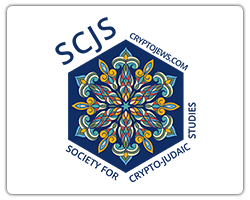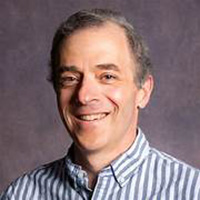Review of Literature
For almost three decades the story of the descendants of Jewish conversos or cryptoJews of the American Southwest has been big news in the popular press Everyone from the New York Times to Hadassah Magazine to the Forward has had a go at it on more than one occasion Over the years the focus of the accounts in the popular press on cryptoJews in the American Southwest has shifted: from oral tradition – tales of ancestors who survived the Spanish Inquisition by converting to Catholicism while at the same time maintaining Jewish practices in secret – to genealogy studies as well as DNA research The tones taken by the various authors have included everything from awestruck to playful to snide derision
Two early New York Times articles “Scholars and Descendants Uncover Hidden Legacy of Jews in Southwest” published November 11 1990 and “After 500 Years Discovering Jewish Ties That Bind” published November 29 1992) are by Kathleen Teltsch In both articles Teltsch includes brief summaries of the history of the converso Jews and singles out some individuals to interview concerning their families’ stories She also quotes Stanley Hordes in both articles In “Scholars and Descendants” Teltsch quotes Rabbi Isaac Celnik then rabbi of Congregation B’nai Israel in Albuquerque NM She also quotes Rabbi Marc Angel of Congregation Shearith Israel in New York and describes some of his reservations about accepting the descendants of conversos as Jews Teltsch’s second article “After 500 Years Discovering Jewish Ties That Bind” contains no naysayers
In an Oct 29 2005 New York Times article entitled “Hispanics Uncovering Roots as Inquisition’s `Hidden’ Jews” by Simon Romero we see the changes that a decade of interest has brought to the study For one thing Romero includes developments in the field of DNA studies and references Bennett Greenspan founder and CEO of Family Tree DNA on the work his company is doing in helping “Hispanics interested in exploring the possibility of Jewish ancestry” Romero’s article also hints to the fact that he has read and possibly taken as valid material which appeared in the December 2000 issue of Atlantic Monthly
In December 2000 Atlantic Monthly published an article entitled “Mistaken Identity?: The Case of New Mexico’s `Hidden Jews” by Barbara Ferry and Debbie Nathan It is hard to know where to begin when reviewing Ferry and Nathan’s article It is this reviewer’s opinion that Ferry and Nathan’s article is possibly the most inaccurate and distorted account of the converso story in the American Southwest ever to appear in the popular press The very first words set the tone by announcing that the true explanation for the phenomenon is “nearly as improbable” as the explanation that conversos are descendants of Jews forced to convert to Christianity during the Inquisition For someone unfamiliar with the history of the American Southwest the idea has now been planted that the accepted explanation is “improbable” when in actuality Ferry and Nathan’s explanation that these practitioners were influenced by Seventh Day Adventists is improbable Jewish behavior is documented in the area long before the arrival of the Protestant sect Unfortunately Ferry and Nathan failed to investigate historical documentation from the Catholic Church and Inquisition records which other scholars argue support the notion that the descendants of Jewish conversos settled in the area and brought hidden Jewish customs and identity with them
The Ferry and Nathan article was also poorly edited and filled with inaccuracies The first page of the article contains a picture of a mysteriouslooking stone object with some Hebrew letters No caption identifies the source of the photo but a reader unfamiliar with New Mexico would be drawn in by its dark quality and hint of something sinister It is of course nothing more than the tetragrammaton carved above the doors of the St Francis Cathedral in Santa Fe a symbol which has nothing whatsoever to do with conversos The photo is never explained in the article It is one of many examples of attempts to sensationalize and discredit converso history in the region Ferry and Nathan continue to misrepresent the facts and the stories of the lives of the individuals who allowed themselves to be interviewed At the same time they glorify the flawed research of Judith Neulander who while making some valid points about not relying on the possession of Jewish artifacts such as dreidels or mezuzahs as proof of a Jewish past is the unfortunate creator of the Seventh Day Adventist theory as the explanation for the existence of Jewish practices among Christians in New Mexico
In recent years some writers have taken a more serious approach by focusing on the scientific angle: specifically developments in DNA research The October 2008 issue of Smithsonian Magazine for instance ran an article by Jeff Wheelwright entitled “The Secret of San Luis Valley” Wheelwright includes a history of the conversos and cryptoJews from the Inquisition to modernday New Mexico but his focus is on the 185delAG mutation of the BRCA gene in Jewish women The mutation is implicated in breast cancer and its recent discovery in surprising numbers of Hispanic women in Southern Colorado According to Wheelwright until recently this mutation was thought to be associated with Ashkenazi women only but now it has been identified in women of Sephardic heritage “los judios” of San Luis Valley in Southern Colorado
Talia Bloch takes Wheelwright’s line of inquiry even further in her article “The Other Jewish Genetic Diseases” in the August 28 2009 issue of Forward She includes a comprehensive discussion of genetic diseases in Ashkenazi and Sephardic Jews In addition the paper ran a second article by Bloch focusing on Persian Jewish disorders a twopage listing of Jewish genetic diseases with comments on symptoms testing and treatment for each one and more articles on Jewish genetic diseases by other authors
Despite this seeming new serious approach and the scholarly interest in what DNA research can bring to the cryptoJewish/ converso story the oldstyle breathless “guess what’s happening out in the desert” type of story still appears in major magazines So
we find in the December 2009 issue of Harper’s Magazine an article entitled “Shalom on the Range: In Search of the American CryptoJew” by Theodore Ross Ross recounts his own scant Jewish history and says the “idea of hidden Judaism in Santa Fe had the feel of a tall tale of yetis and UFOs and Atlantis” He judges the practices of cryptoJews sweeping to the center of the room covering the mirrors after a funeral as dubious because he has never heard of them While some of the people he encounters in his travels in New Mexico are not genuine examples of conversos Ross adopts a tone which suggests that none are His approach in the end is superficial at best
We do not have space here to examine every article written about conversos in the popular press It is best to keep in mind that authors in the popular press are journalists who are not necessarily trained as scholars They give a brief history and some examples They do not delve into the profound trauma of living a double life of keeping a family secret of finding out late in life that your family story is not what you thought it was Nor are they equipped by training to tackle such subjects The highest praise goes to those who do not trivialize the subject or attempt to make a joke at the expense of those whose lives continue to be affected by this history every day
At last there is a body of serious scholarship accumulating which looks not only at the history of this phenomenon but also at the impact it has on people’s lives and on our understanding of Jewish history One of the earliest scholars who contributed to the popularization of serious academic study of cryptoJewish studies is Stanley Hordes After completing his doctoral dissertation on the Inquisition in Mexico City people started to come to him with tales about the survival of Jewish practices in New Mexico; his curiosity was peaked and he began to study the phenomenon more closely Scholars such as Stanley Hordes David Gitlitz Seth Kunin Janet Liebman Jacobs and others are where we should be turning to for answers to the many questions surrounding cryptoJewish history and identity
Norma Libman is a journalist and educator She has been researching Jewish converso history and contemporary life for 16 years





